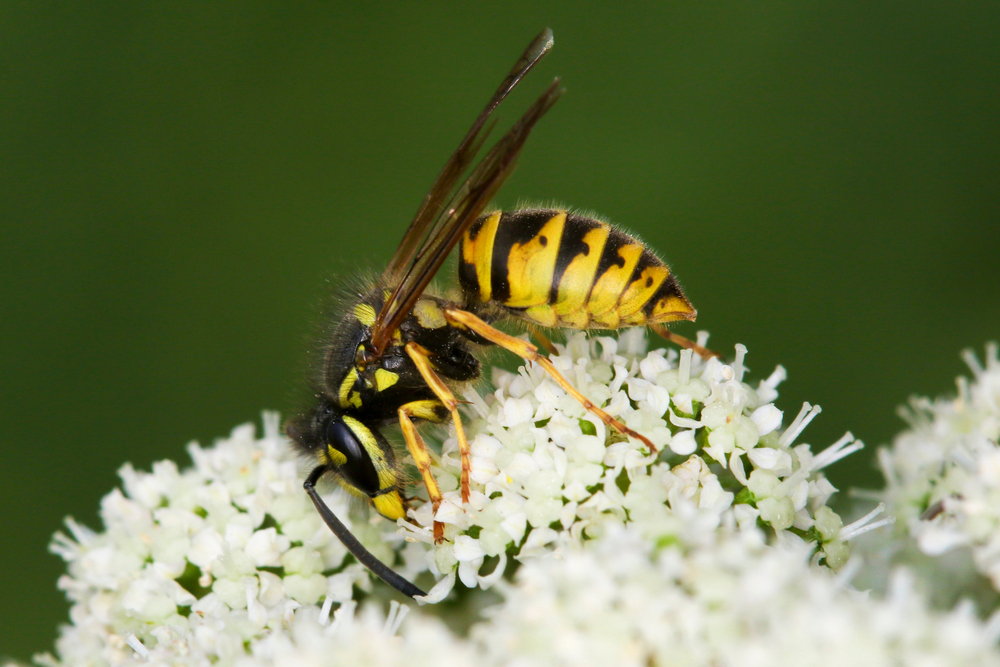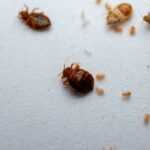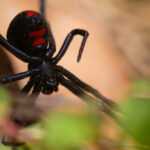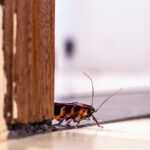Pest Control Yellow Jackets: Strategies for Homeowners
Discover practical strategies for effective yellow jacket control at home. Protect your space and enjoy peace of mind. Read the article for expert tips!
Best Tips for Effective Pest Control: Yellow Jackets Eradication Guide
Are yellow jackets troubling your home? In this comprehensive guide on pest control yellow jackets, learn how to identify these pests, find their nests, and effectively eliminate them using DIY methods or professional services. Protect your home and family from beetles, painful stings, and potential health risks associated with pest control yellow jackets.
- Effective pest control begins with correct identification of yellow jackets, characterized by their black and yellow coloration, aggressive behavior, and nesting habits.
- DIY methods such as traps, baits, and natural sprays are effective for managing yellow jacket populations, while professional services may be necessary for severe infestations.
- Preventive measures, including securing food and garbage, planting repellent herbs, and understanding the yellow jacket life cycle, are essential for keeping these pests away.
Identifying Yellow Jackets
The first step in managing yellow jackets around your home is identification. Yellow jackets are a type of wasp, easily distinguished from bees by:
- Their sleek, less hairy bodies
- More elongated shape
- Striking black and yellow coloration
- Often complemented by white markings on their faces These features make them quite noticeable.
Unlike bees, yellow jackets lack the expanded hind legs used for pollen collection. They have a segmented body structure with a more defined waist, making them appear more streamlined. Key characteristics of yellow jackets include:
- Worker yellow jackets typically measure about 12 mm in length.
- Queens can grow up to 19 mm.
- They have two pairs of wings that are as long as their body.
- Their wings aid in swift, agile flight.
Another distinctive feature of yellow jackets includes their aggressive behavior, characterized by:
- Well-defined mandibles for capturing prey
- Ability to sting multiple times when threatened, unlike honey bees which sting only once
- Rapid side-to-side flight pattern when approaching or landing
This aggressive nature and flight pattern make them easily recognizable among other insects and rid most species of other flying insects, including vespula spp, social insects, bee, and animals.
Common Yellow Jacket Habitats
Understanding where yellow jackets build their nests can help you locate and control them more effectively. Yellow jackets typically build their nests in both aerial and underground nests locations. Common nesting sites include wall voids, bushes, trees, and abandoned rodent burrows. These insects are highly adaptable and can use various materials such as wood, paper, and other fibrous substances to construct their nests.
Ground-nesting yellow jackets often create large paper envelope nests that can house thousands of individuals. These nests are usually found in enclosed areas such as:
- Tree cavities
- Wall voids
These locations provide the colony with protection from predators and harsh weather conditions. In contrast, aerial nests: - Are often seen hanging from trees or eaves
- Resemble the paper nests of hornets, hornet nests, and paper wasps. Yellow jackets build nests that are often large and complex, with a nest entrance that can be difficult to locate.
Yellow jackets’ preference for building yellowjacket nests in concealed or protected areas makes them a common problem in residential settings. It’s not unusual to find a yellow jacket nest in your attics, garage, or even under your deck. Identifying and monitoring these nesting sites early in the season can prevent a small infestation from becoming a significant issue.
Yellow Jacket Diet and Behavior
Yellow jackets are not just a nuisance because of their aggressive nature; their diet and behavior also contribute to their pesky reputation. These insects are opportunistic feed, consuming a variety of food sources. During the summer, their diet mainly consists of insects, but they also have a sweet tooth for sweet things, feeding on tree sap, nectar, and human food like soft drinks, meat, and sweets.
Their scavengers behavior often brings them into close contact with humans, especially during outdoor activities where food and drinks are present. This can lead to increased yellowjacket problems, as they aggressively protect their food sources and nests. Their ability to sting multiple times adds to the risk, making it essential to manage their presence effectively, particularly when foraging wasps are around.
Dangers of Yellow Jacket Stings
Yellow jacket stings are not only painful but can also pose serious health risks. The venom from a yellow jacket sting can trigger severe allergic reactions, including symptoms like dizziness, difficulty breathing, and in extreme cases, anaphylaxis, which is life-threatening. It’s important to recognize these symptoms early to seek immediate medical attention.
Unlike honey bees, yellow jackets can sting multiple times, injecting venom with each sting. This capability makes them particularly dangerous when they feel threatened or their nest is disturbed. Multiple stings and wasp stings can lead to significant complications such as low blood pressure, kidney failure, and intense pain and swelling at the sting site caused by stinging insects.
Common symptoms of a yellow jacket sting include burning, redness, and persistent tenderness. For individuals with severe allergies, even a single sting can be fatal if not treated promptly. Therefore, understanding the dangers associated with yellow jacket stings underscores the importance of effective pest control measures to protect yourself and your family from these stinging pests.
DIY Yellow Jacket Control Methods
You can often manage yellow jacket populations around your home with effective DIY methods, including:
- Traps
- Baits
- Sprays
- Repellents These methods provide a cost-effective and immediate solution for dealing with yellowjacket problems.
Let’s explore some of these DIY techniques in detail.
Traps and Baits
Traps and baits are a practical way to lure yellow jackets away from areas where people frequently gather. One effective homemade trap involves using a two-liter bottle filled with a mixture of water, dish soap, and apple cider vinegar. This concoction attracts the yellow jackets, and once they enter the bottle, they can’t escape and eventually drown.
Commercial traps are also available and can be placed strategically around your yard to reduce yellow jacket populations. These traps often use sweet baits to attract the insects. Placing traps near nest entrances or areas where yellow jackets are commonly seen can help control their numbers.
Regularly checking and emptying traps maintains their effectiveness. By using traps and baits, you can:
- Create a safer environment by keeping yellow jackets away from outdoor dining areas
- Keep yellow jackets away from garbage cans
- Keep yellow jackets away from other spots where they might pose a threat through trapping.
Sprays and Repellents
Sprays and repellents offer another layer of defense against yellow jackets. When selecting and using a spraying, consider the following:
- Ensure the spray is specifically designed for wasps to guarantee effectiveness.
- Use the sprays directly on yellow jacket nests.
- Observe the nest size and number of openings before application to ensure complete coverage.
A natural approach involves using essential oils like lavender and clove mixed with water as a spray around potential nesting areas. This method not only repels yellow jackets but also provides a safer alternative for families and pets. Applying these repellents regularly can keep yellow jackets at bay and prevent new nests from forming.
Prevention Tips for Yellow Jackets
Preventing yellow jackets from invading your space is better than dealing with an infestation. One effective measure is to keep outdoor food covered and ensure drinks are sealed. Yellow jackets are attracted to sugary substances, so keeping these items out of their reach can significantly reduce their presence.
Securing garbage cans tightly is another crucial step. Yellow jackets often scavenge for food waste, and a sealed garbage can deter them from foraging around your home. Planting spearmint, thyme, and lemongrass can also help repel yellow jackets naturally, creating a less inviting environment for these pests.
Additionally, using essential oils like lavender and clove mixed with water to spray around potential nesting areas can be an effective repellent. Creating faux nests using crumpled brown paper bags can trick yellow jackets into thinking another colony is nearby, discouraging them from nesting in the area.
These prevention tips can keep yellow jackets at bay, ensuring a safer outdoor environment.
Understanding Yellow Jacket Life Cycle
Understanding the life cycle of yellow jackets can provide insights into their behavior and help in planning effective control measures. The life cycle begins in winter when fertilized queens hibernate in natural or manmade shelters. In early spring, the queens emerge to create a nest from chewed plant fibers and lay eggs.
The lifecycle and roles within a yellowjacket colonies include:
- Initial offspring are sterile female workers who take over tasks such as expanding the nest and caring for the queen.
- A mature yellow jacket colony can have up to 5,000 workers at its peak.
- In the fall, the colony produces new male and fertile female yellow jackets for mating.
- After mating, the males die.
- The fertilized females seek hibernation sites to survive the winter.
In warmer climates, yellow jacket nests can grow larger and persist for multiple seasons, especially during the active season. By understanding their life cycle, you can time your control measures more effectively, targeting the most vulnerable stages of their development.
Effective yellow jacket control requires a combination of identification, understanding their behavior, and implementing both DIY and professional control methods. Identifying yellow jackets accurately helps in taking the right measures to control them. Knowing their common habitats and diet can aid in locating and managing nests effectively.
DIY methods like traps, baits, sprays, and repellents provide immediate relief, while professional services ensure thorough and long-term solutions. Preventative measures, such as securing food sources and using natural repellents, can keep yellow jackets at bay.
For comprehensive pest control, consider contacting a professional pest control service. Their expertise and advanced tools guarantee effective and safe removal of yellow jacket nests, ensuring a safer environment for you and your loved ones. Don’t let yellow jackets ruin your outdoor fun—take action today!
Frequently Asked Questions
How can I identify a yellow jacket?
You can identify a yellow jacket by its distinctive black and yellow coloration, less hairy body, elongated shape, and aggressive behavior, along with its ability to sting multiple times. Keep these characteristics in mind when observing wasps.
Where do yellow jackets typically build their nests?
Yellow jackets typically build their nests in aerial locations like trees and bushes, as well as underground in abandoned rodent burrows or wall voids. Their choice of nest site can vary, so be aware of potential locations.
What do yellow jackets eat?
Yellow jackets primarily feed on insects, sugary substances, and human foods such as soft drinks, meat, and sweets. It’s essential to be cautious around these pests, especially during outdoor activities, as they are attracted to food and drinks.
What are the dangers of yellow jacket stings?
Yellow jacket stings pose significant dangers, including the risk of severe allergic reactions like anaphylaxis, which can be life-threatening. Additionally, their ability to sting multiple times can lead to serious complications, such as low blood pressure and kidney failure.
What are the benefits of hiring professional pest control services?
Hiring professional pest control services guarantees safe and efficient pest removal, utilizing advanced tools and specialized products that are not accessible to homeowners. This results in more effective management of pest problems, ensuring a healthier environment.



